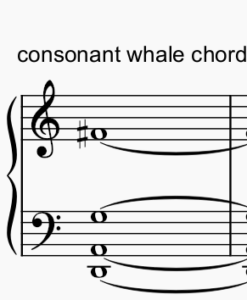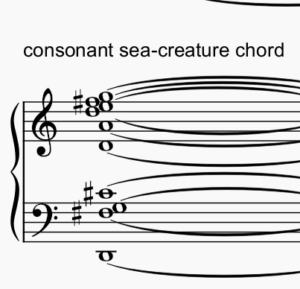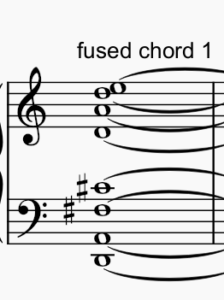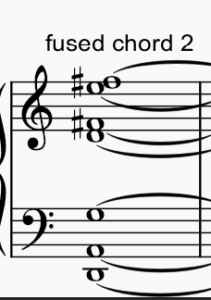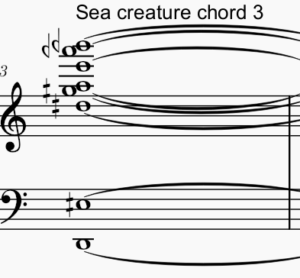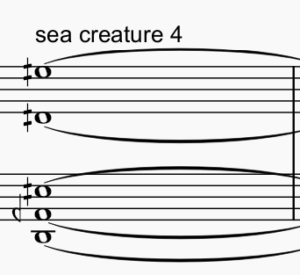Both when forming the spectral harmonies and during the chopping up of the improvisation, there was something I realized about the sound worlds being created that I felt important to mention. Both the ‘sound effects’ and the ‘music’ had a similar aesthetic effect. This is particularly true of the improvisation samples, which could easily be perceived as sound effects, and the spectral chords, half of which where based on a few of the sound effects.
This lead me to a conclusion, that sound design and composition in this context aren’t necessarily separate mediums, but exist in the same medium of sound. The main distinction between sound design and composition is how we get towards the sounds. Sound designers have more of an expertise effects via sampling, electronic manipulation, recording foley, etc, with a main focus on the use of digital technology. Whilst as a composer (in this context) my main Arguably these ideas are echoed in spectral composition philosophy where timbre and harmony are considered to be one in the same (Harvey, 2000)*.
*this is true here, where the sound design, is much dealing with different kinds of sound, and I mainly am dealing with different kinds of harmony, thought timbre is considered in my work a lot (orchestration, instrumentation, extended techniques, etc.) and harmony is thought to some respects in sound (i.e frequency manipulation, white/pink noise, etc.)
Harvey, J. (2000) Spectralism. Contemporary music review. 19 (3), p. 11–14.
